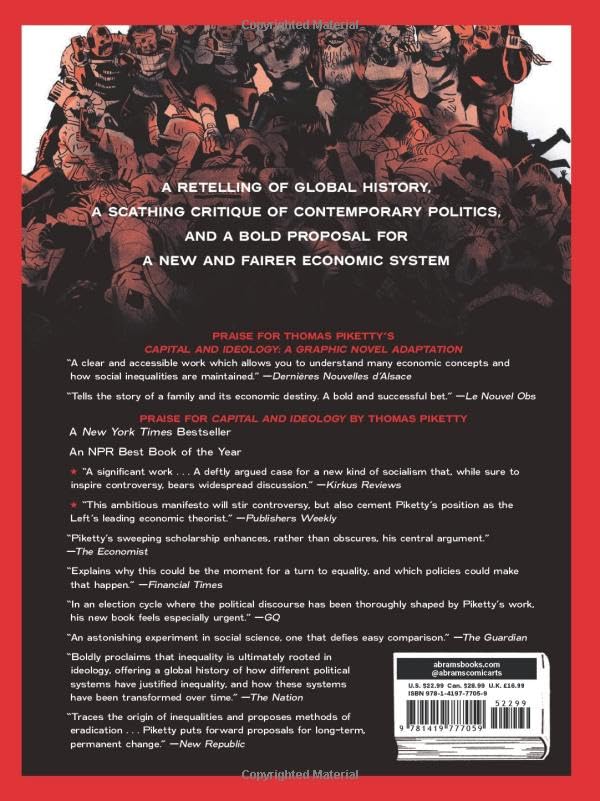









Thomas PikettyCapital & Ideology: A Graphic Novel Adaptation: Based on the book by Thomas Piketty, the bestselling author of Capital in the 21st Century and Capital and Ideology
M**1
Explains complex things
A graphic novel based on Thomas Piketty's novel on the history of capitalism focusing on a French family over many generations down to the current era. This is a good presentation of complex economic issues in a very understandable manner. The graphics are not the greatest but adequate. This is secondary to the overall message about the pros and cons of different tax systems and the long-term effects of wealth on inequality.
D**H
Mixed feelings on this adaptation
Capital & Ideology is a graphic novel adaption of the famous non-fiction book of the same name. This version uses a fictional family across centuries to teach basic economics history and theories. It works well for high schoolers and up. However, younger children will be quickly bored by all the terms and confused by all the family members and dates.We start in Paris in 1901. Inequity has allowed the top 10% to control 80-90% of the wealth. The bottom 50% holds almost nothing a bare 1-2%. There is talk of implementing a new idea, progressive income tax, as a means of spreading the wealth around more equally. Predictably, the rich are not in favor of it.Then we move backwards to the time of feudal landowners, 1789. The rich were still rich and the poor were still kept literally dirt poor. Eventually, the tides turned against the rich. Property transfer taxes were paid to the government rather than the landowners. The rich didn’t like it but learned to live with it. However, giving the landowners’ land permanently to their sharecroppers was a bridge too far. Following the French Revolution, the land was eventually deeded back to the original landowners. The rich always get their way somehow is the central message.The stories get increasingly short for each generation. They jump around Europe and the decades. During the last few pages of Capital & Ideology, six ideas are proposed to fix the inequalities. They are very French specific but some may work in other countries too. This section seems more like an afterthought than part of the rest of the family lives discussed in the rest of the book.Overall, if high school or college economics or to some extent history are confusing, this book would be an easy way to learn some simple concepts in a fun way. However, I can’t picture many people reading it just for fun. 3 stars.Thanks to NetGalley and Abrams ComicArts for providing me with an advanced review copy.
Trustpilot
3 weeks ago
1 week ago